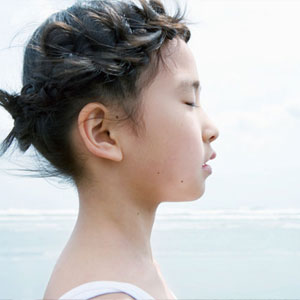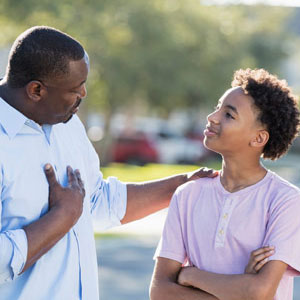Respiratory Distress Syndrome
What Is Respiratory Distress Syndrome?
Respiratory distress syndrome (RDS) is a breathing problem that affects newborns, mostly those who are born more than 6 weeks before their due date. The earlier or more premature a baby is born, the more likely the baby will develop RDS.
Many babies with milder symptoms get better in 3–4 days. Those who are very premature may take longer to recover.
What Are the Signs & Symptoms of Respiratory Distress Syndrome?
Within minutes or hours of being born, a baby with RDS will have problems with breathing and their oxygen level will drop. If untreated, these problems can get worse over time.
Symptoms of RDS include:
- fast breathing
- noisy breathing or grunting
- retractions (a tugging in of the muscles between the ribs, under the ribcage, and at the neck) while trying to breathe
- a blue tint in the lips, nail beds, and skin from lack of oxygen, called
What Happens in Respiratory Distress Syndrome?
RDS happens when a baby's lungs don't make enough of a fatty substance called surfactant (ser-FAK-tent) or it doesn't work as it should.
Surfactant is made in the lungs during the last few weeks of pregnancy. It helps tiny air sacs in the lungs called alveoli (al-VEE-oh-lye) open more easily. These sacs fill with air when a baby breathes after birth. Surfactant also helps keep the alveoli open when air leaves the lungs.
When a baby with RDS tries to breathe:
- many of the alveoli cave in and can't open
- oxygen can't get to the blood
- carbon dioxide can't leave the body
If it's not treated, in time this can damage a baby's brain and other vital organs due to lack of oxygen in the body.
How Is Respiratory Distress Syndrome Diagnosed?
Health care providers will suspect RDS in a premature baby who has trouble breathing and needs oxygen soon after birth. A chest X-ray of the lungs can confirm the diagnosis.
How Is Respiratory Distress Syndrome Treated?
To help prevent respiratory distress syndrome, doctors can give steroid medicines to pregnant women who are likely to deliver their babies early (before 37 weeks of gestation). Steroids help the baby's lungs mature and make more surfactant before the baby is born.
Doctors will give oxygen to a baby who has signs of RDS and breathing trouble. If breathing problems continue, the baby may need continuous positive airway pressure (CPAP). With CPAP:
- The baby wears a mask or a that's connected to a machine.
- The machine sends a stream of air or oxygen into the lungs through the nose.
CPAP opens the alveoli, supplies oxygen, and prevents the alveoli from collapsing. A baby who continues to have signs of respiratory distress or trouble maintaining a good oxygen level on CPAP may need more support with a breathing machine or ventilator. For this, a baby will need intubation (when doctors pass a tube from the baby's mouth or nose to their trachea or breathing tube).
Babies with RDS may need treatment with surfactant. Doctors give surfactant through a breathing tube right into the lungs.
Babies with RDS get treatment in a neonatal intensive care unit (NICU). There, a team of experts cares for these newborns, including:
- doctors who specialize in newborn care (neonatologists)
- skilled nurses and neonatal nurse practitioners
- respiratory therapists, who help with breathing machines
Many babies start to get better within 3 to 4 days, as their lungs start to make surfactant on their own. They'll start to breathe easier, look comfortable, need less oxygen, and can be weaned from the support of CPAP or a ventilator. But some babies — especially very premature babies — need treatment for many days or even weeks.
What Else Should I Know?
Respiratory support with oxygen and a ventilator helps newborn babies with respiratory distress. But long-term use can damage a premature baby's lungs. Some babies born very early need oxygen support for a long time, leading to a condition called bronchopulmonary dysplasia (BPD), also known as chronic lung disease.


